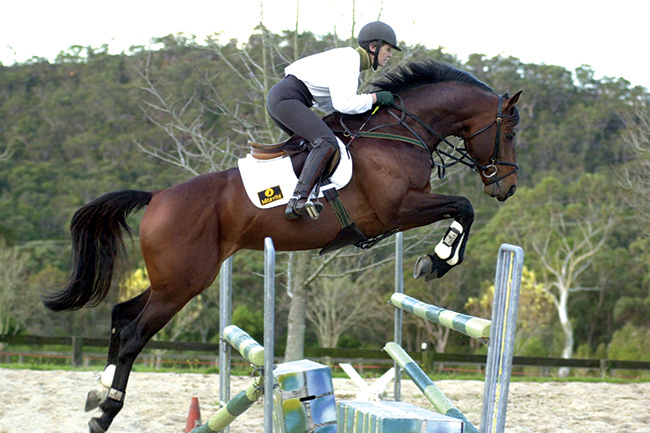 What to do at the show? How do you best use those precious last moments? We asked showjumping star, Vicki Roycroft just what to do.
What to do at the show? How do you best use those precious last moments? We asked showjumping star, Vicki Roycroft just what to do.
The first essential is to have someone to help you. It is a huge disadvantage if you are trying to warm up on your own. You can do so much damage if you are left with about two horses to go, and you haven’t jumped a fence in the warm up area because you haven’t been able to get near a fence that is small enough. Sure you can get off the horse and do something yourself, but if it is an 80cm class and there are usually 150 other horses in the class, there are a bunch of other horses warming up. If you haven’t got someone to help you, instead of getting on your horse with ten horses to go, you are better to get on with twenty horses to go and then pick the time to pop the fence when it is a suitable height for you.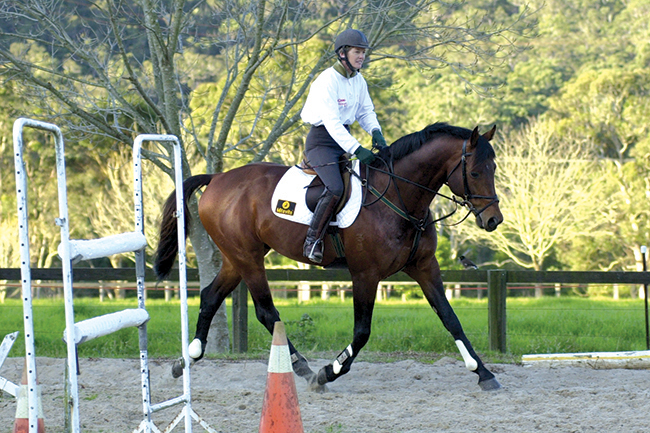
In a way that is not often a bad thing, because your horse might be a bit green and young, and often an off-the-track Thoroughbred – and the longer you sit on them the better anyway.
But really one of the first essentials is to have a helper, so you can jump the fences at the height you would like – especially with a baby horse. Start with a cross rail if you can, or a small vertical. The protocol for who gets to set the height of the fence is the one closest to the start of the draw. The person who is next into the ring has priority over a warm up fence, and that is pretty much international rules. It is an unwritten rule that the one nearest a start has priority over the fence. So if you are number 23 in the draw, then you have priority over number 25. You find the higher the level of the people you are dealing with, the easier it is. You only get into trouble with green riders, or people who aren’t so familiar with the system. Unfortunately, green riders tend to get a bit anxious, and they might jump something a bit big, and knock it all over the place – and unfortunately that does become time consuming. It is important that you stick to the height you want, because you want your horse to go into the ring confident and feeling bulletproof and rideable. There’s very little need for jumping anything big, especially for an inexperienced horse. Start off at about half the height of what you will be jumping in the ring.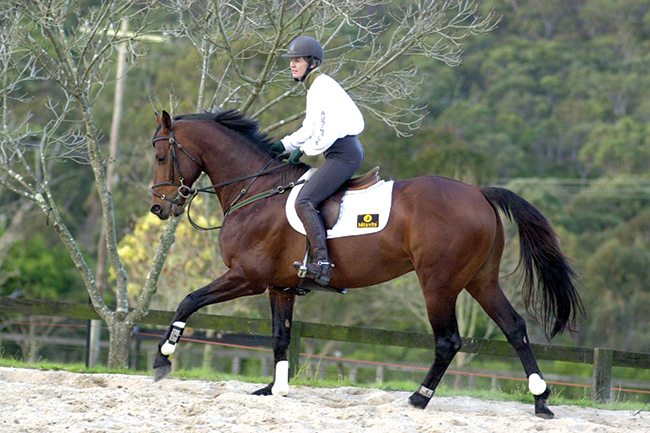
So your warm up fence is a cross rail, or small vertical. Generally you jump a small vertical two or three times, then two or three times over a bigger vertical. Then the same thing with oxers – a small square oxer then make it bigger. Make sure you jump those practice fences off both reins – that’s if you can, obviously don’t come off a really tight turn if the practice fence is right up one end of the narrow area.
The other really important thing, especially for green horse and rider, is to have ground lines. Especially at the vertical fences, because what generally happens when the horse is not focused, or is a little worried, or not straight, then it can leave one or other front leg down, and that creates big technical problems.
With 99% of green horses you will use a ground line at the vertical, so even if the distance is not perfect, they can still get there and have time to get their fornt legs up. If you’ve got a horse that is poor in front, the last thing you want it to do is hit the rail in front too hard, because that has the effect of making the horse take its knees back rather than forward and up, which is what you want them to do.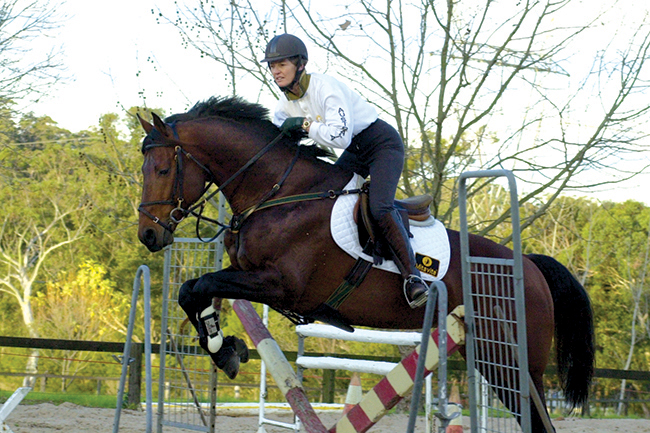
When you get them too deep in a class they often start to not just hang a leg, but also to hang a shoulder which is not so nice.
It is very important with young horses that you work with ground lines at the verticals, and with the square oxers, the ground line is not quite so important because you’ve got the back rail to keep the horse’s front end up.
You rarely use close ground lines with young horses, even with experienced horses I’m not crazy about them.
A rising oxer is an easy way to start a bigger oxer, especially if you are a greener rider and not confident about your distances. It’s a more forgiving fence than a square oxer, so when you go from a small oxer to a bigger oxer, you will sometimes use a rising oxer with a green horse, to get its confidence without making it too tough, and for the more experienced horse, the rising oxer just gets their backends working a bit better, ride it a bit dead – a bit slow and a bit deep, so that maybe they just jump up in the air and make a bit of a weak jump off the ground, then maybe they’ll get a back end rub, and then for your final fence square it up, and that just sharpens them a bit, so you get a bit of a front end rub so that they are more focussed on the top rail when you get into the ring.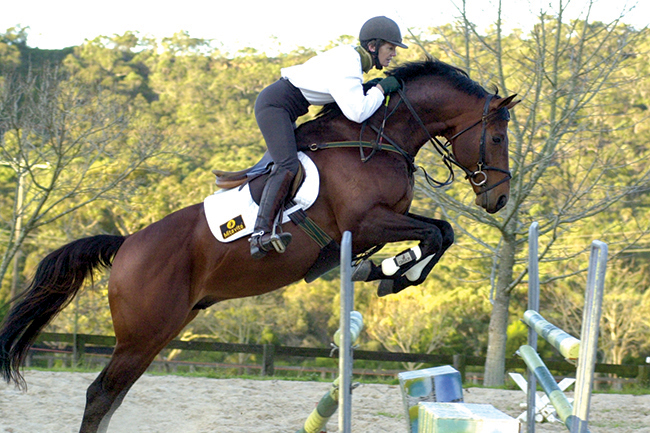
At the end of the day what you want is the horses focussing on the top rail. With the courses we have today, they put the jumps on difficult distances, so you are distracting the horse, and the nature of the fences now with the optical effects and different fills also takes the horse’s eye off the top rail. The rider must make sure the horse is focussed on the top rail – not all this ‘stuff’ in and around it. It is difficult at the practice fence because they are normally plain coloured rails with no fill, whereas in the ring it is different, but if you can get the horse more focussed up on the top rail out in the practise ring by just having a few little rubs here and there, then they will concentrate a bit better when they get out in the ring.
That’s the theory, good luck…
This article first appeared in the September 2001 issue of THM.

